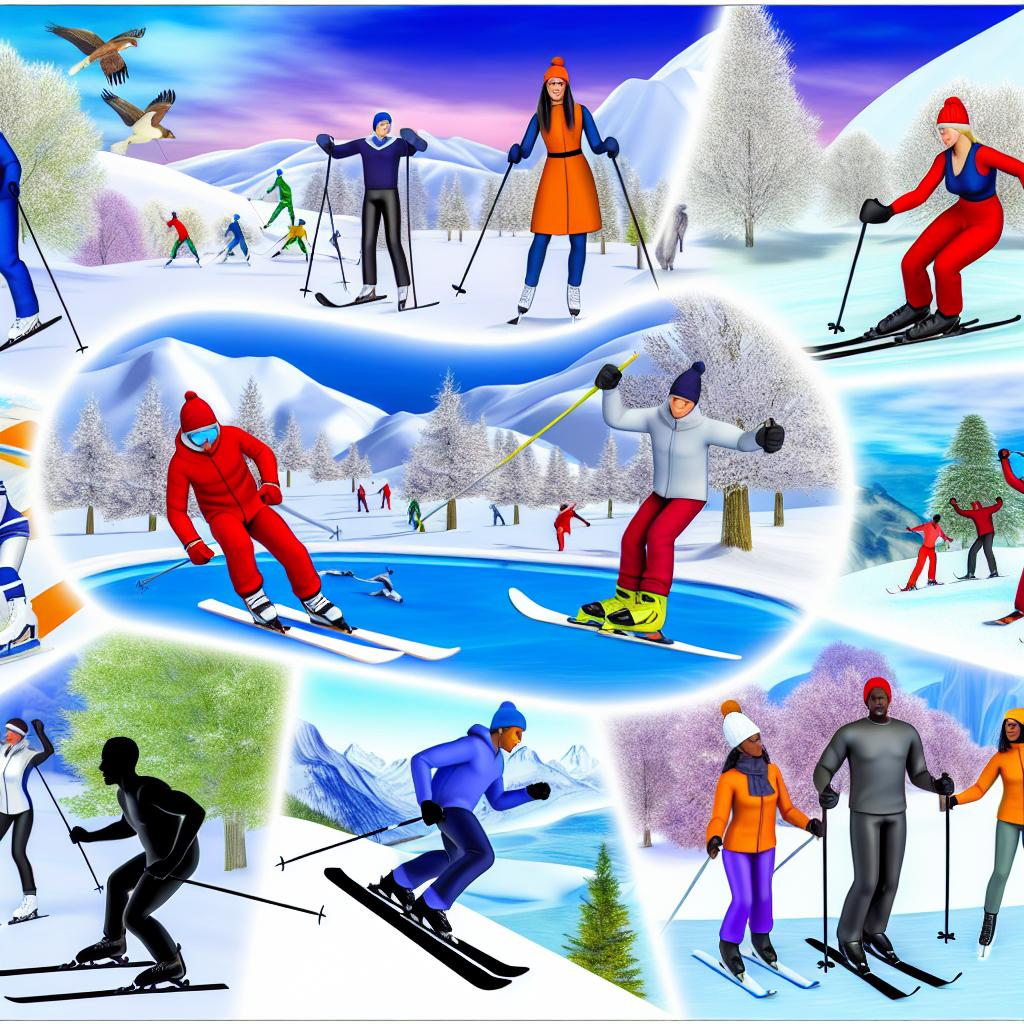The Role of Winter Sports in Enhancing Physical Health
Winter sports, whether recreational or competitive, play a significant role in promoting physical health. Engaging in these activities offers a diverse range of benefits that substantially improve various aspects of physical fitness. In this expanded article, we will explore these benefits in more detail, providing insights into how winter sports can contribute to a healthier lifestyle.
Improved Cardiovascular Health
Many winter sports activities, such as skiing and snowboarding, are excellent forms of cardiovascular exercise. These sports require sustained endurance, increasing heart rate and improving circulation. When partaking in such activities, the heart works harder to pump blood efficiently to different parts of the body, thereby strengthening the cardiovascular system. Enhanced cardiovascular health can lead to a decreased risk of diseases such as hypertension and heart disease. Additionally, participating in these fast-paced, dynamic activities encourages the body to improve its oxygen utilization, which is vital for overall endurance.
Muscle Strength and Flexibility
Participating in winter sports involves working against resistance, whether maneuvering through snow or maintaining balance on ice. This resistance improves muscle strength, particularly in the legs, back, and core regions. For instance, downhill skiing engages the quadriceps, hamstrings, and gluteal muscles, necessitating strong leg support and coordination. Snowboarding, on the other hand, calls for substantial use of core muscles to manage balance and shift weight efficiently.
Furthermore, activities like ice skating and skiing require agility and flexibility, contributing to enhanced overall body flexibility. As muscles and joints undergo regular stretching and movement, they become more adaptable and less prone to injuries. This increased flexibility is instrumental in promoting functional fitness, which improves daily activities and overall mobility.
Core Stability and Balance
Many winter sports challenge an individual’s balance and core stability. For instance, sports like snowboarding necessitate maintaining equilibrium on uneven surfaces, which strengthens the core muscles and improves balance over time. As athletes work to remain stable during intricate maneuvers on snow or ice, they are unknowingly engaging multiple muscle groups. Development of the core muscles, including the abdominals and obliques, results in better posture and movement efficiency in various physical activities. This stability is essential not only for performance in winter sports but also for preventing falls and injuries in everyday situations.
Weight Management
Engaging in winter sports can be an effective method for managing weight. These sports often increase metabolic rates and help burn significant calories. For instance, an hour of skiing or snowboarding can burn hundreds of calories, depending on the intensity, which can lead to a caloric deficit if combined with a healthy diet. Regular participation can therefore contribute to weight management and even weight loss, reducing the likelihood of obesity-related health issues. Furthermore, winter sports provide a fun, engaging way to remain active during colder months, when people might otherwise become sedentary. Maintaining regular physical activity is vital for overall health and wellness.
Enhanced Mental Well-being
While primarily physical, the benefits of winter sports extend to mental health. Participation can lead to the release of endorphins, which are natural mood lifters that can reduce stress and improve overall mood. The exhilaration of skiing down a slope or the serenity of gliding across an ice rink can provide a much-needed mental escape from daily stressors. The outdoor aspect of many winter sports also contributes to mental well-being by providing exposure to natural environments. Being surrounded by beautiful winter landscapes can have a calming effect, reducing anxiety and promoting a sense of peace and contentment. The combination of physical exertion and natural beauty thus creates a holistic approach to wellness.
Winter Sports Safety
Despite the numerous benefits, it is crucial to approach winter sports with safety in mind. Ensuring safety requires awareness and preparation. Proper gear and clothing are essential to protect against the cold and potential injuries. For instance, wearing a helmet while skiing or snowboarding can prevent head injuries. Layered clothing and insulated gear help maintain body warmth, reducing the risk of hypothermia. Awareness of weather conditions and understanding terrain are critical for avoiding accidents.
Participants should also recognize their skill level and gradually progress to more challenging terrains or activities. Beginners may benefit from professional lessons, which can teach essential techniques and safety practices. Lastly, staying hydrated and taking breaks prevent overexertion, which is vital for maintaining safety during prolonged periods of physical activity.
For more detailed guidance on safety measures, consider visiting relevant resources like the CDC or other specialized sports health websites. These resources provide comprehensive advice on safety protocols and preventive measures specific to various winter sports.
Conclusion
In summary, the role of winter sports in enhancing physical health is multifaceted. These activities offer substantial cardiovascular benefits, improve muscle strength and flexibility, and aid in weight management. Beyond the physical advantages, winter sports have a significant impact on mental well-being, combining psychological relaxation with the thrills of dynamic movement. While the benefits are numerous, maintaining a focus on safety is paramount to enjoying these activities successfully and sustainably. As winter sports enthusiasts continue to explore snow-covered landscapes and frozen surfaces, they not only embrace a lifestyle of excitement and adventure but also invest in their long-term health and vitality.
